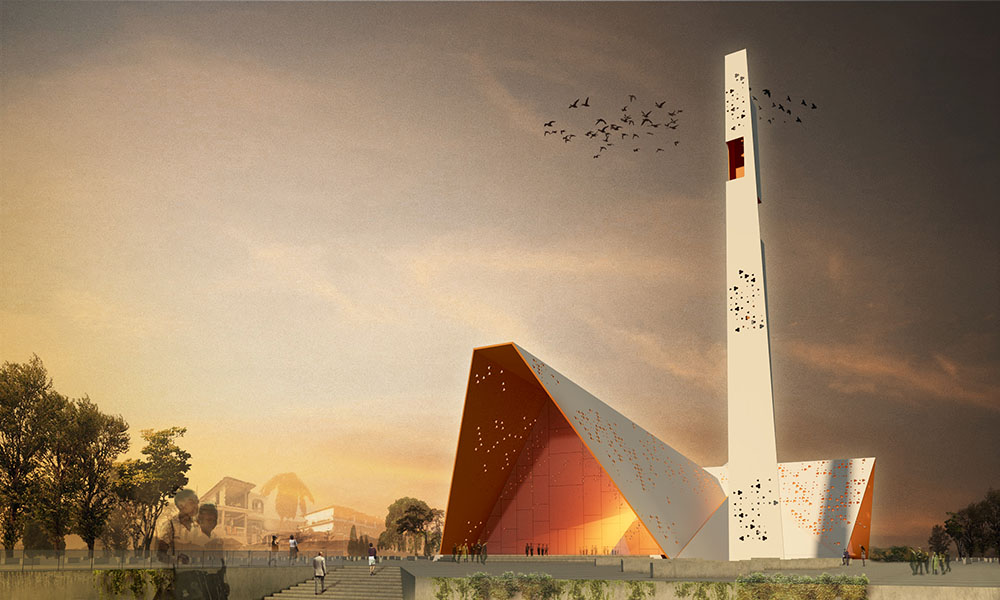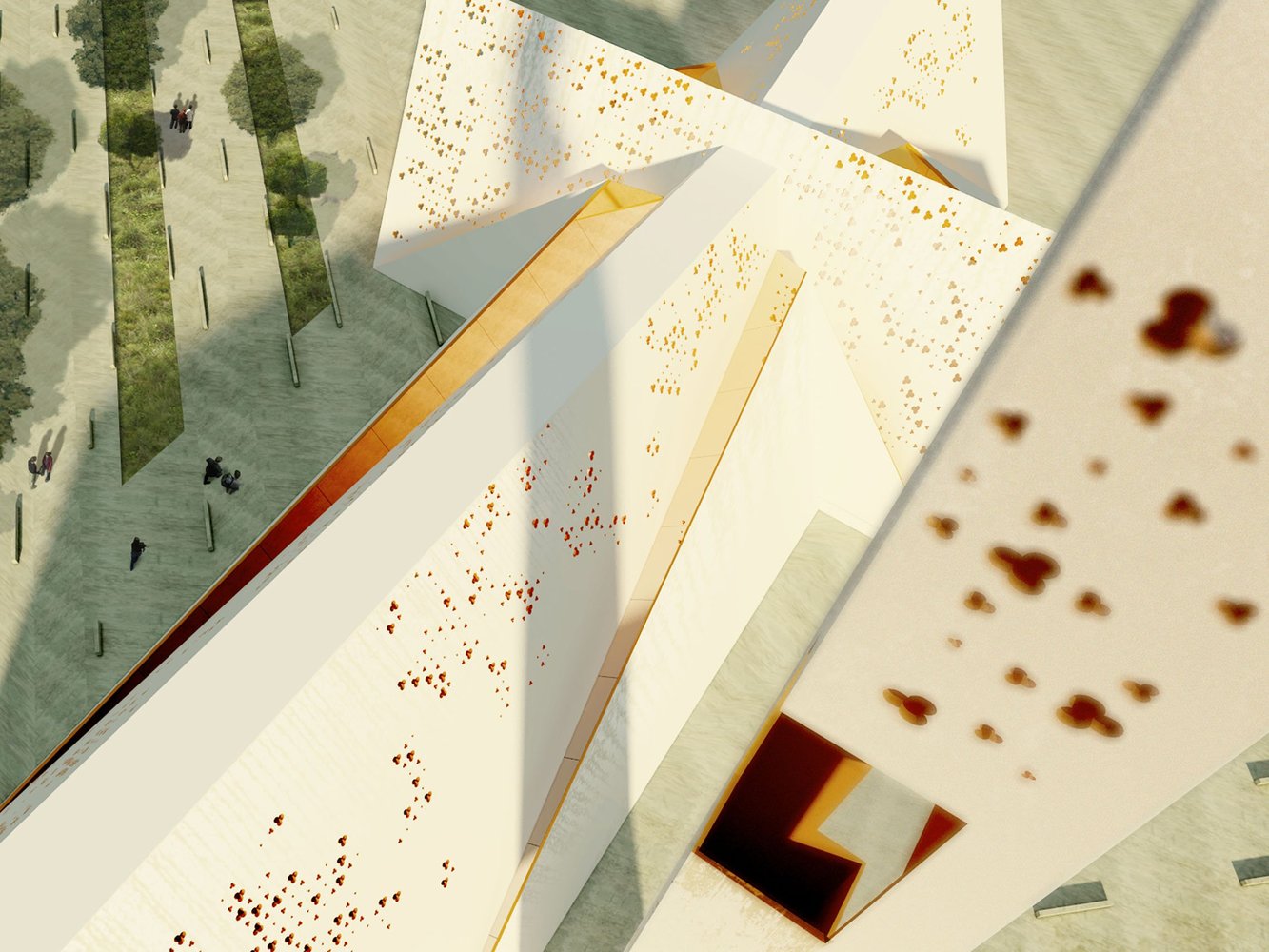The proposal for the Notre Dame de l’Assomption draws on the life and culture of the Haitian people, while remembering the site’s history and the lives lost on January 12, 2010. Inspired by a Haitian fisherman’s boat, the project’s folded origami form aims links the new cathedral to the old cathedral’s former function as a lighthouse.
The cathedral is constructed from large trusses clad in recycled metal sheets, perforated by the local artists of Croix-de-Bouquet with the pattern of the old rose window. The pattern permits diffuse light to enter the interior, creating a solemn and contemplative atmosphere inside. A water catchment channel outlines the footprint of the former cathedral, and collected water is used in the Reflection Garden to the north of the cathedral, as well as to aid in passively cooling the interior.
The double layer ventilated cladding helps to maintain a comfortable interior temperature, while openings along the bottom of the cladding draws in water-cooled air into the building. Next to the cathedral is a 60-meter tall bell tower containing the belfry and an observation deck that offers spectacular views of Port-au-Prince. The tower also serves as a beacon and icon for the city, becoming a point of orientation.
The landscape surrounding the cathedral is divided into several public spaces – a formalized pattern of benches and trees, more urban in character, extends to the west and south of the cathedral. A grand staircase connects the lower level of the street to the plaza in front of the cathedral, and provides ample outdoor space for sermons. The broader urban plan extends beyond the boundaries of the old cathedral, and encompasses the adjoining plaza. A bridge, on axis with the cathedral, physically links the two urban areas, and provides a peaceful transition between the busy larger square and the tranquility of the cathedral. This larger plaza consists of vendor kiosks, benches, and trees, and allows the life of the city to shape the space.
Client: Archdiocese of Port au Prince
Partners: YCF Group SA, Architecture for Humanity, ARCA Consulting
Status: Competition
Development Cost: 40M US$
Area: 2940 sqm
Credits: Andrea Panizzo, Burtland Granvil, Elizabeth Lafontant, Taina Mayard, Nancy Doran, Peter Arnts, Laura Smits, Sven Kalim, Radim Tkadlec, Vanni Puccioni, Lucia Alunni Grillini, Stefano Prinzivalli




